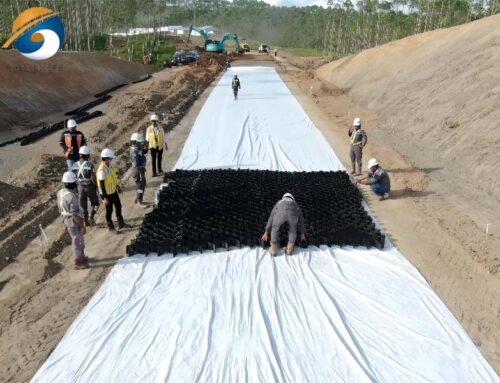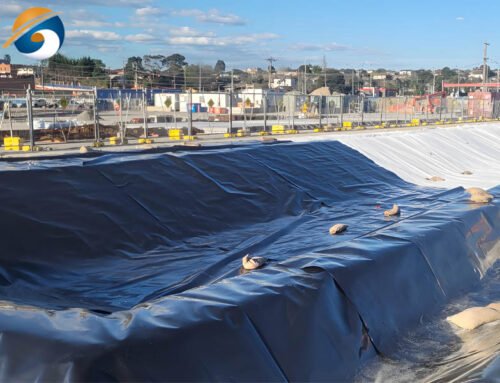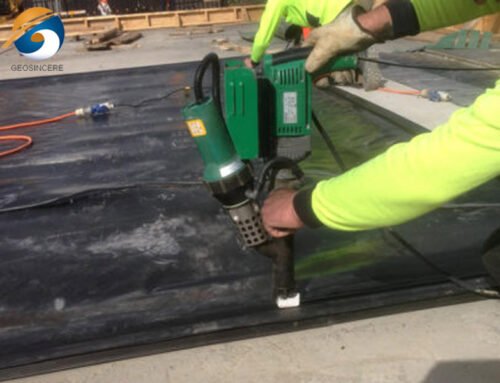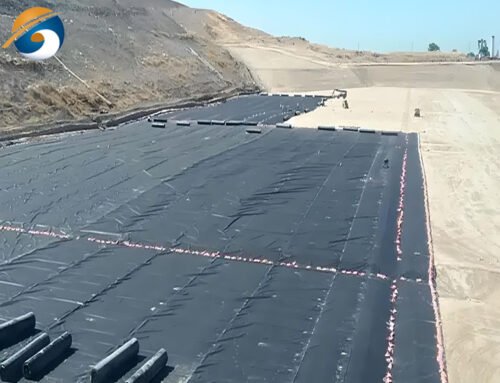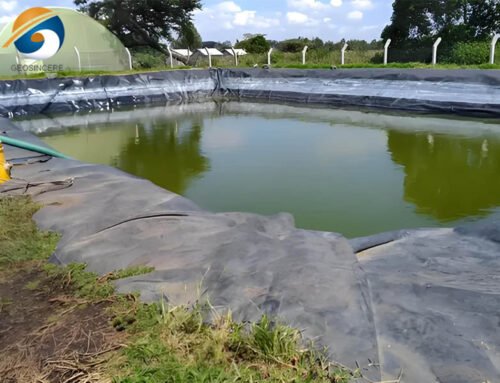PE geomembrane is widely used.With the continuous advancement of infrastructure and growing environmental awareness, geosynthetic materials are increasingly used in sectors such as water conservancy, transportation, environmental protection, and construction. As a key member of this material family, geomembranes play an irreplaceable role in seepage control, corrosion resistance, and isolation. Especially GEOSINCERE PE geomembranes – thanks to their excellent performance, wide adaptability, and environmentally friendly properties – have become the go-to impermeable material for many engineering projects.
This article will thoroughly analyze “Why choose PE geomembrane?” by introducing its basic definition, classification, performance advantages, application scenarios, selection guidance, and more—helping project managers, designers, and procurement professionals make informed decisions.
1. What Is a PE Geomembrane?
PE geomembrane is a geosynthetic material made primarily from polyethylene (PE), produced via extrusion calendering or blown film processes. It offers excellent flexibility, impermeability, and chemical resistance. Common PE materials include:
- HDPE (High-Density Polyethylene)
- LDPE (Low-Density Polyethylene)
- LLDPE (Linear Low-Density Polyethylene)
Among them, HDPE geomembrane is the most widely used due to its high density, strength, and exceptional chemical resistance. Depending on thickness and application, PE geomembranes come in smooth, double-sided smooth, and textured types.
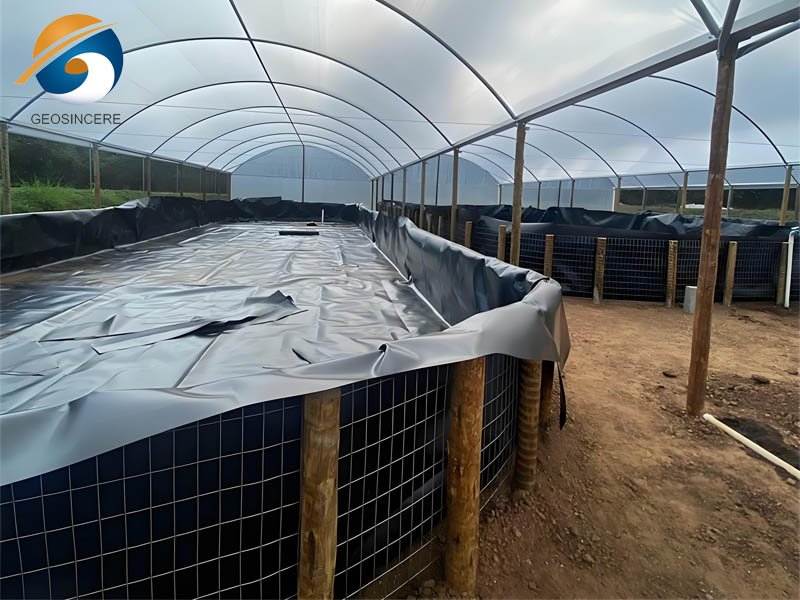

2. Material Advantages of PE Geomembrane
The primary reason for selecting PE geomembrane is its superior technical performance, which forms the foundation for its widespread use in civil engineering. Key advantages include exceptional chemical resistance, high puncture and tear strength, outstanding flexibility, and long-term durability against environmental stressors like UV exposure. These properties ensure reliable impermeability and structural integrity, making it an ideal, cost-effective solution for critical containment applications such as landfills, reservoirs, and mining operations.
2.1 PE Geomembrane – Excellent Impermeability
PE geomembranes not only possess an extremely low permeability coefficient, but they also actively prevent the penetration of water, chemicals, and gases. Consequently, their seepage control performance far surpasses that of traditional materials like clay and concrete. As a result, engineers consistently select them as the premier choice for critical applications. For instance, in landfills, tailings ponds, and reservoirs, these liners effectively safeguard groundwater and protect the surrounding environment from contamination.
2.2 PE Geomembrane – Outstanding Chemical Resistance
Due to their robust chemical resistance, PE geomembranes effectively withstand exposure to acids, alkalis, salts, and most organic solvents. Consequently, this property makes them an ideal choice for lining harsh, corrosive environments like chemical waste ponds and sewage treatment facilities. Furthermore, these liners exhibit high durability, which allows them to resist degradation and maintain their structural integrity over extended periods, even under demanding conditions.
2.3 PE Geomembrane – High Tensile Strength and Elongation
Thanks to their excellent tensile strength and high elongation at break—which can exceed 700%—PE geomembranes not only accommodate foundation settlements and frost heave but also withstand other complex geological movements. As a result, they effectively resist cracking and thereby ensure long-term stability and reliability for the entire project.
2.4 PE Geomembrane – Good Low-Temperature Flexibility
Unlike materials such as PVC, PE geomembranes not only retain their flexibility in extremely cold conditions but also demonstrate a much higher resistance to brittle fracture. This key advantage allows engineers to confidently specify them for challenging projects in high-altitude regions or frigid northern climates, where reliable performance is critical. Therefore, their superior low-temperature toughness makes them a preferred and dependable solution.
2.5 PE Geomembrane – UV and Aging Resistance
By adding UV stabilizers, PE geomembranes can be used in exposed outdoor environments for extended periods without significant degradation. HDPE geomembranes typically include additives such as carbon black, antioxidants, and UV absorbers to enhance resistance to aging and extend service life even under long-term sun exposure.
3. Construction Advantages of PE Geomembrane
3.1 Lightweight and Easy to Install
Because PE geomembranes are exceptionally lightweight, they are easy to transport and handle on-site. As a result, crews can deploy them efficiently using either mechanical or manual laying methods. This flexibility significantly reduces overall construction difficulty and, consequently, leads to substantial savings in both time and labor costs.
3.2 Excellent Weldability
PE geomembranes not only support installation methods like heat fusion and dual-track welding, but these techniques also create seams with exceptionally high strength and reliable sealing. Consequently, this process guarantees the overall integrity of the impermeable barrier, thereby ensuring long-term performance and environmental protection for the entire project.
3.3 Strong Adaptability
Due to their high flexibility, PE geomembranes not only conform seamlessly to complex terrain but also adapt effectively to slopes and uneven foundations. This inherent property provides excellent construction adaptability, thereby simplifying the installation process and ensuring a perfect fit for virtually any project site.
3.4 Short Construction Cycle
Compared with traditional concrete impermeable structures, PE geomembranes install much faster, significantly shortening project timelines and improving construction efficiency.
4. Wide Range of Applications
Thanks to their remarkable properties, PE geomembranes are used in a wide range of sectors:
4.1 Water Conservancy Projects
- Reservoirs and canal seepage prevention
- Artificial lakes and landscape water bodies
- Dam reinforcement and lining
4.2 Environmental Protection Projects
- Landfill liners and covers
- Sewage treatment ponds
- Hazardous waste containment
4.3 Agricultural Applications
- Fish and shrimp farming ponds
- Irrigation canal lining
- Water storage ponds and biogas digesters
4.4 Municipal Engineering
- Underground tunnel waterproofing
- Subway waterproofing
- Rooftop greening and waterproofing
4.5 Mining Industry
- Tailing bottomliners
- Heap leach pad liners
- Mining wastewater treatment
As a key part of infrastructure construction, PE geomembrane plays a critical role in ensuring project safety and protecting the environment.
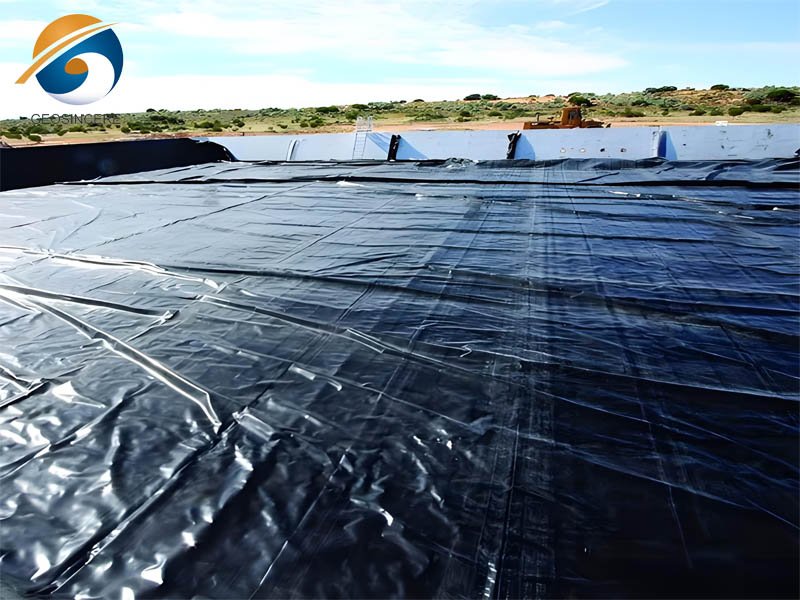
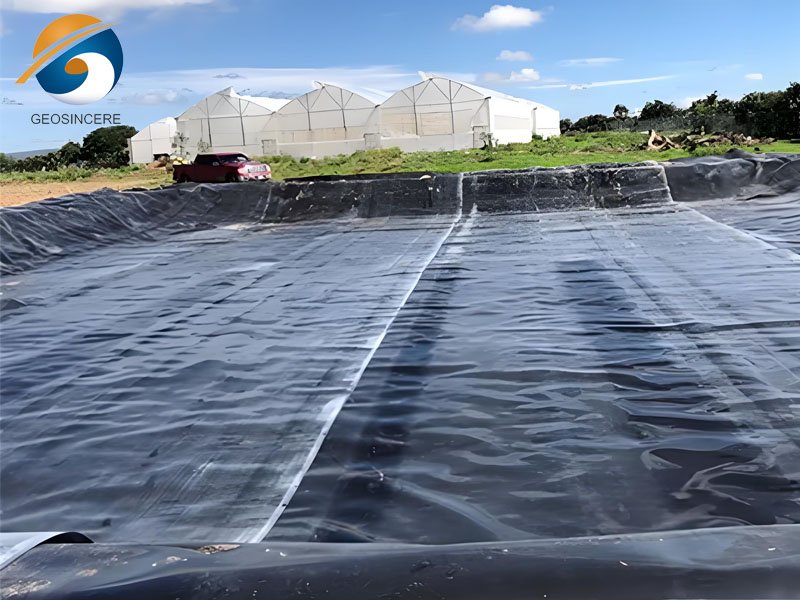
5. Economic Value of PE Geomembranes
While the initial cost of PE geomembrane may be higher than that of traditional materials like clay or concrete, it offers superior long-term economic benefits:
- Lower construction costs: Faster installation and reduced labor and equipment expenses.
- Minimal maintenance costs: Long-lasting durability and resistance to degradation reduce the need for repairs.
- Reduced leakage losses: Effective impermeability prevents environmental contamination and resource waste.
6. Future Development Trends of PE Geomembranes
As environmental standards become stricter and engineering technologies evolve, PE geomembranes are developing in the following directions:
- High-performance composite geomembranes: Combined with geotextiles for enhanced puncture resistance and strength.
- Eco-friendly PE materials: Recyclable polyethylene to reduce environmental impact.
7. How to Choose the Right PE Geomembrane?
When selecting a PE geomembrane, consider the following:
- Thickness options: Typically ranging from 0.2mm to 3.0mm, depending on project needs.
- Material type: HDPE for durability, LLDPE for flexibility—each suited for different applications.
- Quality standards: Ensure compliance with GB/T 17643-2011 or ASTM standards.
- Manufacturer credentials: Choose experienced, certified manufacturers for guaranteed quality and service.
8. Why Choose Us?
GEOSINCERE As a professional manufacturer of PE geomembranes, we adhere to the principle of “quality first, service foremost,” and are committed to delivering high-performance, eco-friendly, customizable geomembrane solutions.
Our core advantages include:
- Advanced production lines: Automated multi-layer co-extrusion for precise control and stable quality.
- Strict quality control: From raw materials to finished product inspections, we ensure consistent quality.
- Large-scale supply capacity: We produce 3 to 4 full containers per day, ensuring stable delivery for bulk orders and export projects.
- Technical support services: Professional engineers provide design consultation, on-site guidance, and after-sales support.
- Nationwide fast logistics: Multiple warehouses for rapid shipping and on-time project delivery.
Whether you’re a government contractor or involved in municipal, environmental, agricultural, or transportation projects, choosing our PE geomembrane means choosing both quality and efficiency.
9. Conclusion: Choosing PE Geomembrane Is Choosing a Greener Future
With the advancement of China’s dual carbon goals and the push for eco-friendly construction, sustainable building materials are becoming the new standard. PE geomembranes, with their excellent performance, high cost-efficiency, and environmental compatibility, have become a vital component in modern engineering projects focused on impermeability, protection, and sustainability.
Why choose GEOSINCERE PE geomembrane? The answer is simple: it makes your project safer, your environment cleaner, and your future brighter.
If you have any questions about PE geomembranes or would like to request a sample, a quote, or technical consultation, feel free to contact us. We look forward to working with you to build a greener, more sustainable future!

